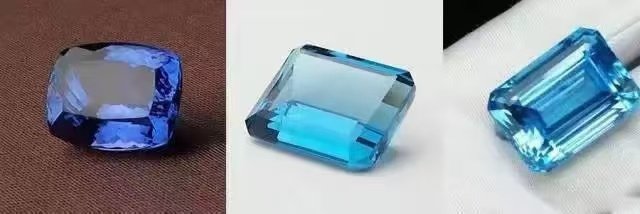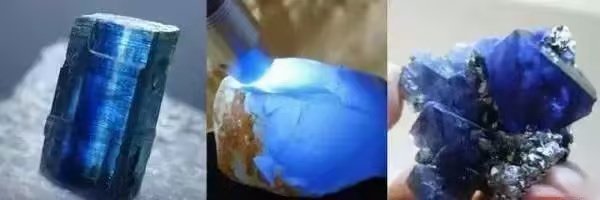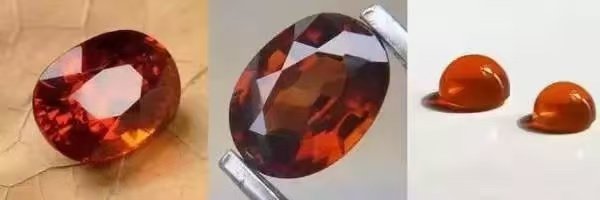Colored gemstones are simply stones that come in various colors. To be considered a gem, a mineral needs to be beautiful, durable, and rare. All three are necessary. Beauty is about the stone’s color and shine, durability means it should be hard and resistant to wear and tear, and rarity means there aren’t many of them available. With so many colored gems out there, how do we categorize them? Let’s take a look.
What gemstone is red color?
Pure red gemstones are hard to find. The main types are ruby, spinel, and garnet, but there are also high-quality red tourmalines that can look like rubies. Common red gemstones include:
Ruby and Red spinel and Red garnet

Tourmaline and Sunstone and Red zircon

What gemstone is pink color?
The most common pink gemstones are tourmaline, spinel, and pink topaz, with rare pink sapphires being quite lovely as well. Some pink stones have a purplish tint. Common pink gemstones include:
Pink sapphire and Pink tourmaline and Pink spinel

Red garnet and Rose quartz and Purple spodumene and Morganite

What gemstone is blue color?
Statistics show that blue is the most popular gemstone color. Common blue gemstones include:
Sapphire and Blue tourmaline and Blue spinel

Tanzanite and Topaz and Zircon

Aquamarine and Apatite and Lapis lazuli

Paraiba tourmaline and Moonstone Cordierite

Kyanite and Chalcedony and Fluorite

Note: “Sapphire” refers to all colors of corundum stones except ruby, including pink, yellow, and white.
What gemstone is green color?
Emeralds are the classic green gemstones, but there are also tsavorite (a type of garnet) and chrome diopside. Olivine has an olive green color. Common green gems include:
Emerald and Green tourmaline and Paraiba green tourmaline

Chrome diopside and Olivine and Jade

Apatite and Blue sapphire and Dongling stone

Grape stone and Chalcedony and Zoisite

What gemstone is yellow color?
The most common yellow gemstones are topaz and yellow sapphire. Other common yellow gemstones include:
Yellow sapphire and Topaz and Yellow opal

Tourmaline and Sphenite and Zircon

Orthoclase and Chrysoberyl and Spodumene and Yellow diamond

What gemstone is purple color?
Purple gemstones are quite rare; amethyst is a typical example. Fluorite can also have a purple color, and some types of spinel, tourmaline, and sapphire can show pretty purple shades. Chalcedony can sometimes be lavender. Common purple gems include:
Amethyst and Fluorite and Purple spinel

Purple tourmaline and Purple sapphire and Purple chalcedony

What gemstone is orange color?
Manganite is the most well-known orange gemstone. Some heat-treated sapphires can also look beautiful in orange, and good fire opal can show lovely shades from orange-yellow to orange-red. Common orange gems include:
Manganese aluminum garnet and Orange zircon and Orange opal

Orange sapphire and Topaz and Orange moonstone

What gemstone is white color?
Common white gemstones include diamonds and white crystals. These are typically:
Diamond and White sapphire and White moonstone

White topaz and White opal and White jade

White crystal and White chalcedony

What gemstone is brown color?
Brown gemstones are less popular, but there are some exceptions
Brown tourmaline and Tiger’s eyeBrown chalcedony and Brown topaz

What gemstone is gray color?
There aren’t many gemstones that are mainly gray or silver, but gray spinel is known for its bright shine. Common gray gems include:
Gray spinel and Gray tourmaline and Gray fluorite

What gemstone is black color?
Black diamonds often get their color from natural radiation, but black tourmaline is used more often. Common black gems include:
Black diamond and Black tourmaline and Black agate

Black chalcedony and Black sapphire

Multicolor Colored Gemstone
Multicolor gemstones display different colors within one stone. Some examples, like tourmaline, fluorite, and amethyst, show color bands. Common multicolor gemstones include:
Tourmaline and Fluorite and Andalusite

Opal and Sphene and Sapphire

How to Choose Colored Gemstones ?

When choosing a colored gemstone, there are three main aspects to consider, whether you’re looking at rubies, sapphires, emeralds, or other popular gems.
Look at the Color
Currently, popular colored gemstones on the market include pigeon blood rubies, royal blue sapphires, and vibrant emeralds. Some of these gems can appear quite dull, which diminishes their value. Why is this important? Because a colored gemstone should first and foremost have a beautiful, bright color. If a gemstone looks dull, it’s less likely to attract buyers. For instance, if you see a bright ruby next to a dull one, most people would choose the bright one. Therefore, when selecting a colored gemstone, opt for ones with rich, vibrant colors.
Examine the Cut
Although gemstone certificates don’t grade cuts like diamond certificates do, the cut is still very important. For natural gems that haven’t been treated, the cut is the only aspect that involves human skill, and it significantly affects the gem’s beauty.
When assessing a gem’s cut, consider its symmetry, the ratio of its platform width, and the depth of its pavilion. Think of the gem like a person: if the head is tilted or the shoulders are uneven, that’s like poor symmetry in a gem. A well-cut gem should have consistent shapes and sizes in its various sections. The platform should also be proportional; if it’s too big or too small, it won’t look good. Lastly, the gem should have a good polish. If it’s not polished well, it may show marks from the grinding process, which can detract from its brilliance and overall appearance.
Check the Clarity
Clarity reflects how clean the inside of the gem is. It describes any internal characteristics, such as cracks or inclusions. When discussing clarity, it’s important to note whether you’re looking at the gem with the naked eye or under a 10x magnifying glass. Typically, we focus on what’s visible to the naked eye. If the gem appears clean or if minor inclusions can be hidden in less noticeable spots after setting it in jewelry, it’s considered acceptable. After all, in everyday life, no one is likely to use a magnifying glass to examine your jewelry!
If you want to customize gemstone jewelry, please contact us!